Formula Fields
Formula fields allow you to extract, format, or otherwise manipulate data. These fields allow you to leverage any of the formulas available in Tonkean. There is a vast number of different use cases where formula fields are helpful, from a simple formula that combines existing "First Name" and "Last Name" fields from a data source to create a "Full Name" field to more complex formulas that pull data from multiple sources and extract a unique metric useful for your specific business process.
To create a formula field, follow the steps below:
Select the main nav icon,
 , in the top left corner and select Solutions Studio. The Solutions Studio screen displays.
, in the top left corner and select Solutions Studio. The Solutions Studio screen displays.From the module builder screen, select the Fields button on the module builder toolbar. The Fields panel displays.
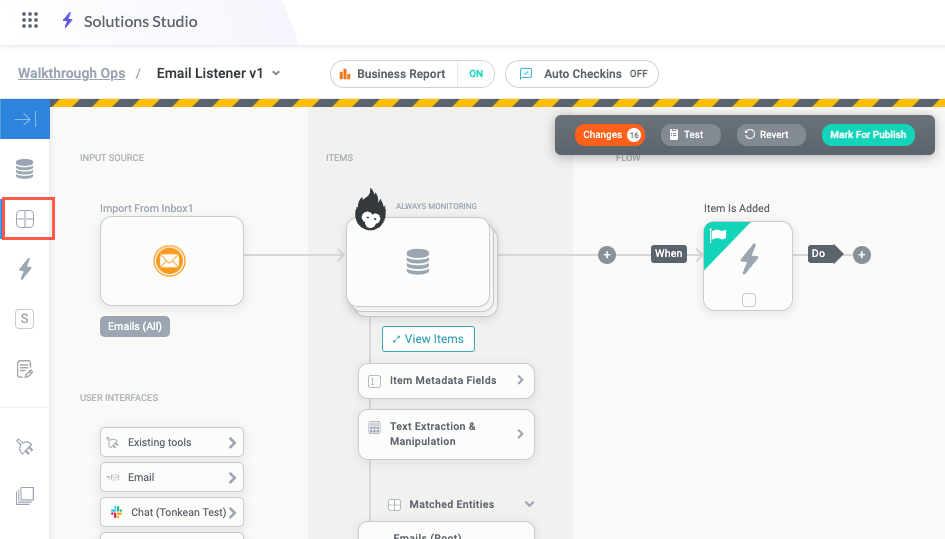
Beside Formula fields, select + Add Field. The Field Settings screen displays.
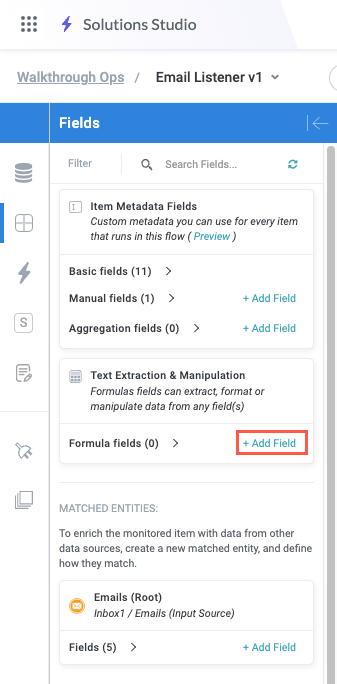
Enter a name for the field.

Follow the steps in the section below to write a formula expression for the field.
Write a Formula Expression
On the Field Settings screen, select the Root button. The Root menu displays. This menu allows you to select from a list of all available formulas, enter text manually, or select an existing field to use as a variable:
Select
 to search for or select from the list of all available formulas. This option displays by default after selecting Root.
to search for or select from the list of all available formulas. This option displays by default after selecting Root.Select
 to manually enter a static value (for example, text, number, or date).
to manually enter a static value (for example, text, number, or date).Select
 to search for or select from a list of existing fields.
to search for or select from a list of existing fields.
Select the fields in the Formula Editor to write and modify your formula. The options available and the required fields can vary depending on the formula you select and values you choose to include.
See Available Formulas for detailed information on formula syntax and examples.
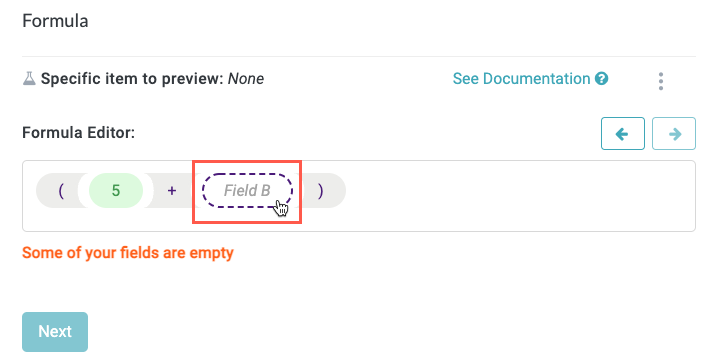
Select Next to move on to the Display Settings section.
The options available in the Display Settings section vary depending on your selections in the Data Settings section, but for each option, you can select + Add field label to enter a brief and descriptive label for your field. When finished, select Next to move on to the Display Conditions & Follow-Ups section.
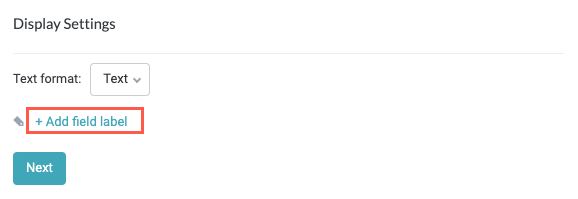
If relevant, select Add Rule to create a rule that determines the display condition and status of the field, based on a specified value. These conditions are useful when you need a module to display differently based on the particular value entered for the field.

Use the conditions dropdown to set the desired condition. For example, if you want to use color to draw attention to a value greater than zero on a business report, you can set the condition to Greater than and the color to Green; this causes the color to change to green when the value is greater than zero. The default value is Equal to and the default color is Green.
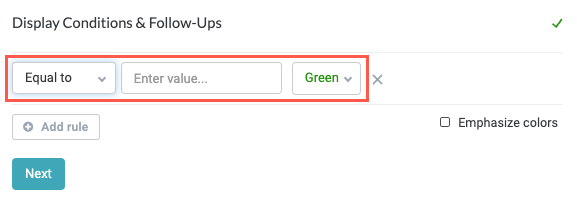
For more information about the conditions and logical operators, see Conditions.
When finished, select Next to continue to the Additional Information section.
In the Additional Information section, there are several configurable fields:
Field description - Enter a brief description of the field, if relevant. While the field label you create should be as clear and unambiguous as possible, this description can still be helpful for forms that contain multiple similar fields of where some ambiguity is unavoidable. This description displays beneath the field when used on a form.
Field group - Enter a name to assign this field to a field group. This is designed for advanced use cases whereby you can use entire groups of related fields, identified by this field group name, in formulas and other operations.
Who can update - Select who can populate or update the field value. This is an important permissions setting at the individual field level, because it determines who can change a field value after it has been entered.
Tonkean is always able to update field values through your workflow business logic (for example, automatically updating a field value with an Update Field action).
It is common to use a combination of these settings across different fields on a single item, depending on your use case and specific needs. For example, if you're including several manual fields on an interface that is the intake source for a module, you may want some fields to be editable only by the requester completing the form while other fields (such as a status field) to be editable only by the reveiwer who is processing or approving the request.
Only admins - Only solution administrators can update the field value. Select this option for fields whose values should never be updated except in rare cases, such as correcting errors.
Only item owners - Only users that have been assigned an item in the relevant item interface can update the field value.
By default, there is no owner assigned to an item, so setting this field to Only item owners without assigning a user to that item would result in the field value being locked to all users.
Any collaborator (default) - Anyone can update this field value. Select this option to allow anyone, including external collaborators, to update the field value. Because manual fields are so commonly used for externally-facing forms, this is the default selection.
Only item creator - Only the user that entered the value in the field (for example, the user that completed the form that contains the field) can update the field value. When using a field on a form, select this option to ensure that only the person who completed and submitted the form can update the field value to protect the integrity of the data.
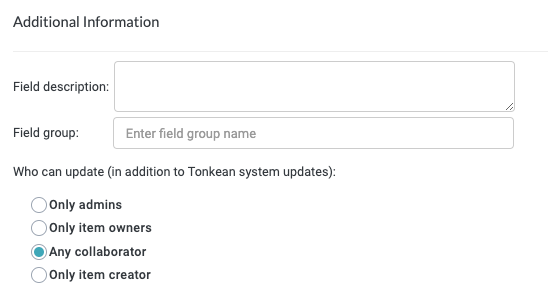
When finished, select Save in the upper right.